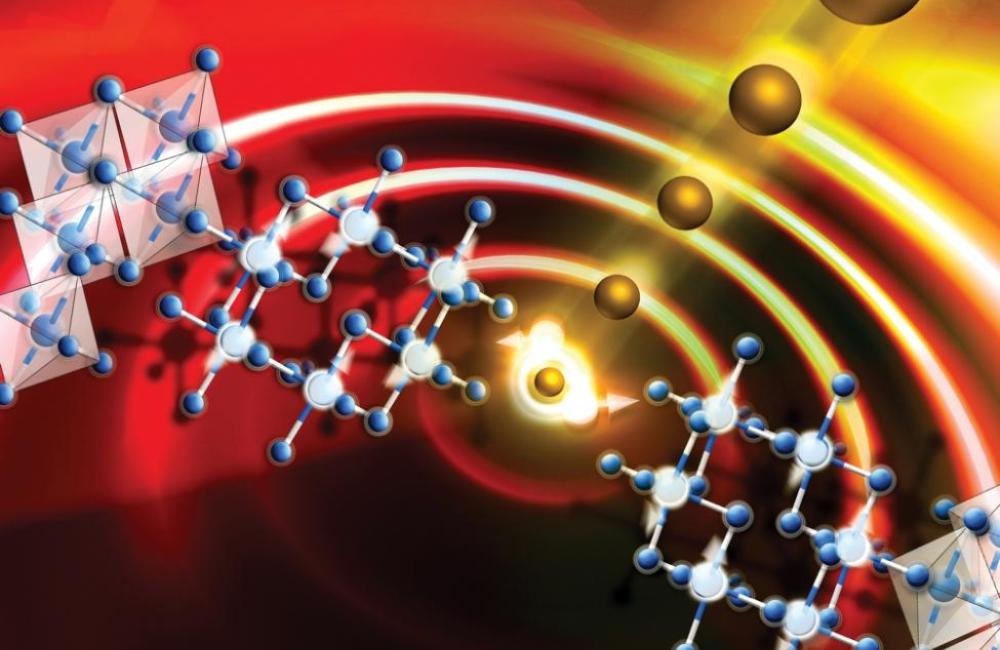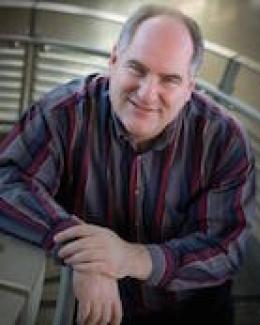Neutrons have for decades helped us understand the exotic electronic and magnetic properties of quantum materials such as high-temperature superconductors and other materials that behave beyond the boundaries of classical physics.
“A revolution in quantum materials is happening now,” said Alan Tennant, chief scientist for ORNL’s Neutron Sciences Directorate. “We’re looking at their properties with a new set of concepts that promise new technologies in the future, and neutrons play a central role in this.”
The study of quantum materials spans a wide range of physics domains and applications. ORNL’s neutron facilities— the High Flux Isotope Reactor and Spallation Neutron Source—are proving especially useful, allowing condensed matter physicists to make remarkable discoveries related to a novel state of matter called quantum spin liquid.
QSLs consist of groups of correlated electrons that behave like tiny microscopic magnets that physicists call “spins.” The electrons in traditional magnets spin in a parallel arrangement throughout the material, forming a cohesive magnetic moment. However, the “frustrated” spins in QSLs demonstrate a liquid-like behavior and do not align in an orderly fashion as you would expect in a solid material—kind of like if water refused to freeze even in freezing temperatures.
“Where we’ve really contributed something new at the forefront is in finding excitations associated with a special type, called Kitaev QSLs,” said Steve Nagler, director of ORNL’s Quantum Condensed Matter Division. “They’ve attracted a lot of attention in recent years because of their possible relation to quantum computing.”
Researchers suspect that if the exotic behavior of the Kitaev QSL can be harnessed, it might provide a potential platform for quantum bits—or qubits— that could revolutionize computing. While traditional bits contain only single pieces of information in the 1s and 0s of a computer’s binary code, qubits have no such limitation.
Nagler was part of the group that identified magnetic excitations associated with the Kitaev QSL in a two-dimensional graphene-like material in 2016, a decade after physicist Alexei Kitaev developed his theoretical model. The paper detailing their discovery was a cover story in Nature Materials, and Discover Magazine ranked it 18th on its list of the 100 most significant research stories of 2016.
Because neutrons have their own magnetic moment but carry no charge, they are ideal for characterizing magnetic behavior in almost any material without compromising the material’s integrity.
“Neutrons are especially adept at characterizing how spins interact with each other through space and time, which are exactly the two things you need to measure magnetic excitations such as those in the Kitaev QSL,” Nagler said. “Our state-of-the-art neutron scattering capabilities, combined with our rich user program, have really allowed us to make some impressive additions to the knowledge of these things.”
Researchers around the world are using ORNL’s suite of neutron scattering instruments to reveal fundamental details such as
- the key ingredients underpinning QSLs’ exotic magnetic behavior;
- new insights into spinons—entities that carry electron spin information; and
- new characterizations of quantum phase transitions, explaining how quantum behavior affects changing states of matter.
ORNL’s Shull Wollan Center is helping to prime discovery by pairing experimentalists with theorists working on the latest developments. It’s a partnership that Tennant, the center’s director, says is necessary to a field that is moving so quickly.
“If silicon and superconductors were the start of a second quantum revolution where quantum effects beyond single atoms were harnessed,” Tennant said, “then what we’re looking at here is a kind of third quantum revolution, where we control and manipulate highly entangled quantum states. This promises to deliver new technologies that are going to de ne the next 50 to 100 years.”



